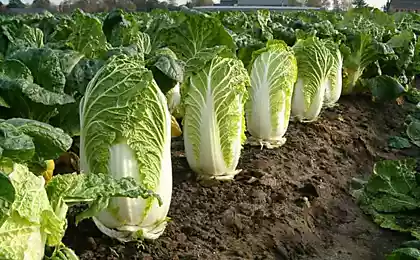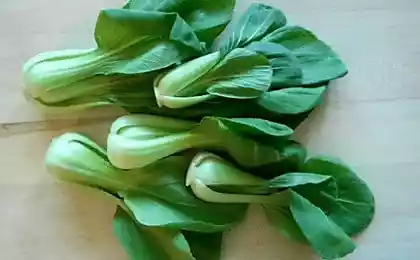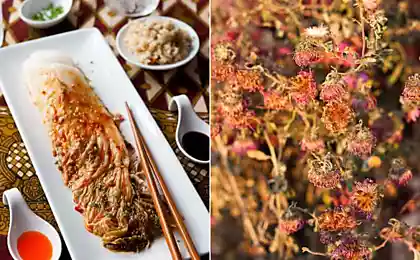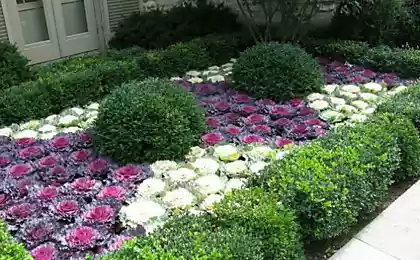561
Kimchi — the most popular dish in North and South Korea
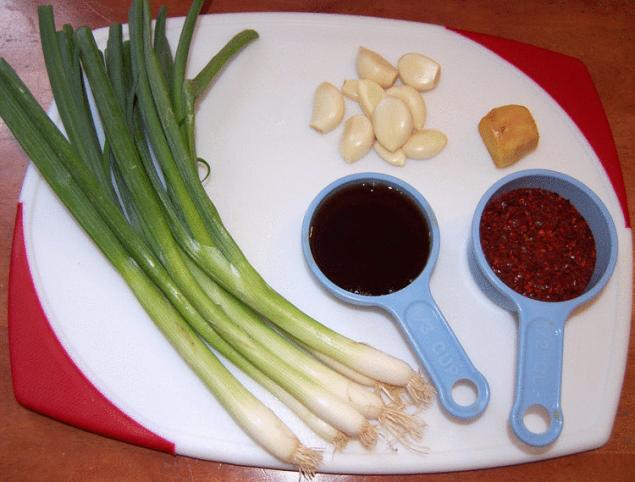
Here is what Sandor Katz about kimchi:
"Kimchi is a spicy Korean dish with many variants. It is prepared by pickling Chinese cabbage, radishes or turnips, scallions and other vegetables, as there are often added algae, and a fixture are ginger, hot red pepper, garlic and (often) fish sauce.Kimchi is the most popular dish in North and South Korea. Korean food research Institute estimates that the average adult Korean consumes about 125 g of kimchi every day. Although commercially made kimchi is gaining popularity, 3/4 still make it home. Kimchi in clay pots around the house (Korea)has also Been a national conflict between Japan and Korea regarding the authenticity of kimchi. Many Japanese like the taste of kimchi, and Japan has even become the largest exporter of kimchi to the global market. However, industrial Japanese kimchi is not exactly in its preparation the fermentation process is replaced by the addition of citric acid. Japanese pseudo-kimchi cheaper because the cooking process does not take much time.South Korea appealed to the Codex Alimentarius Commission international food standards to define kimchi as a fermented product. "We sell the Japanese — just pickled cabbage with spices and flavors," says Robert Kim, of Doosan Corporation, the company which is the largest manufacturer of kimchi in Korea. What the Japanese said that their product is a modern variation, and Korea is no more a "copyright" to kimchi than India to curries or Mexican tacos. After 5 years of trials and discussions, the Code made a decision about establishment of the Korean version of fermented kimchi as the standard for this dish.Most of the recipes are reminiscent of kimchi pickled cabbage, but it has its peculiarities. Vegetables for kimchi (Chinese cabbage, daikon, etc.) are first soaked in brine for several hours and then lay on fermentation. Also traditionally, kimchi is added ginger, garlic, green onion and chili pepper. The process of fermentation is much faster than sauerkraut".

Wikipedia about kimchi on the one hand it is written:
"Kimchi is rich in vitamin A, thiamin (B1), Riboflavin (B2), calcium and iron, contains a number of lactic acid bacteria, among which are typical of the product species Lactobacillus kimchii. Health magazine included kimchi, along with other four kinds of food, in the list of "The healthiest food in the world" (eng. "World's Healthiest Foods"). According to research conducted at Seoul national University, chickens infected with the H5N1 virus (also known as avian influenza), recovered after eating food with the addition of the same bacteria found in kimchi".But on the other hand, a few lines written:
"In 2006, the world health organization said that South Koreans consume salt in 2.7 times more than the recommended amounts, mainly due to excessive eating kimchi, which negatively affects their health. In South Korea abnormally high incidence of cancer of the stomach, often due to the large number of sharp and salty food, particularly kimchi. Also, the increased incidence of cancer due to excessive consumption of kimchi is attributed to the high content in fermented vegetables chemical radicals, such as nitrosgroup".So everything should be in moderation! Especially the first time. I took in less than half spicy products (chili and ginger) — and it has paid off, even, perhaps, you could put a little more! But with the saltiness was a bit much, though, and seemed to taste quite normal.
The recipe here is as it is described in the book of Sandor Katz. So, we will need:
- sea salt
- 500 g or more Chinese cabbage
- 1 daikon radish or a few radishes
- 1-2 carrots
- 1-2 onions and/or green onions (or more!)
- 3-4 cloves of garlic (or more!)
- 3-4 red Chile peppers
- 3 tbsp grated fresh ginger root (about 5-7 cm) (or more)
1. In 1 liter of water dissolve 4 tablespoons of salt, stir well. The brine should be thoroughly salted.
2. Roughly chop cabbage, shred or grate the daikon and carrot and soak the vegetables in brine. Hold their cargo, so they plunged into the brine. Leave for several hours or overnight. At this stage, if desired, you can add other vegetables: algae, Jerusalem artichokes or other — to your taste.
3. Prepare spices: grate the ginger, finely chop the onion and garlic; remove seeds from chilli and chop it; or you can grind all the spices in a food processor. Kimchi can absorb a lot of spices. Experiment with quantities and don't be afraid to overdo it! Mix spices into a paste. If you want — at this stage you can add fish sauce, just make sure it does not contain preservatives that may not allow multiplication of microorganisms for fermentation.
4. Strain the vegetables from the brine, try — are they salty. If they are too salty, rinse them under running water. If on the contrary, insufficiently — add sea salt and stir.
5. Mix the vegetables with the paste of spices. Put everything in a clean quart jar, pressing down to pockets of air and stood brine. It is very important that after laying all of the vegetables, the brine covers the surface. Put a small weight — it can be a pure stone, Bank, or a bottle of water.
6. Leave kimchi for fermentation in a warm place. Try it for readiness every day. After a week, place the kimchi in the refrigerator.
Source: brukva.net




